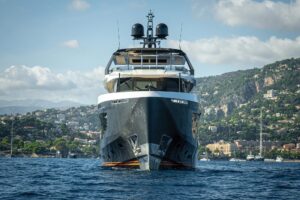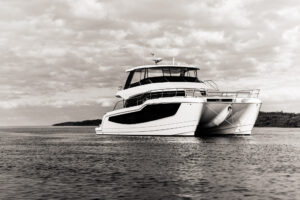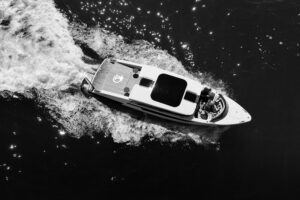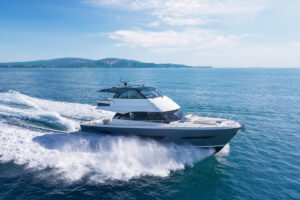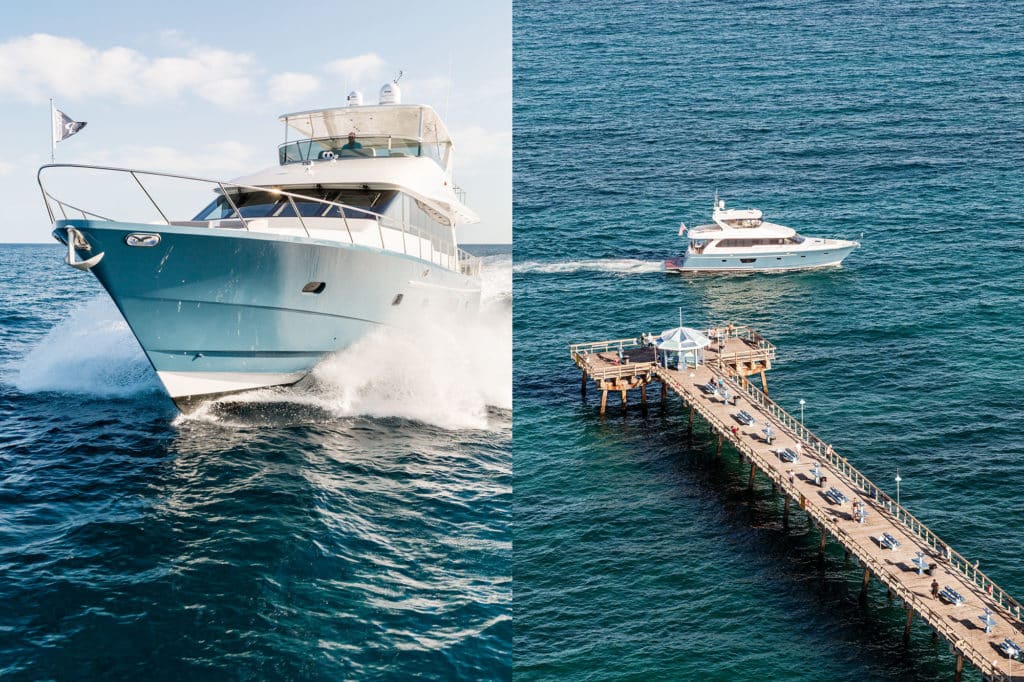
Too many yacht reviews I read are diluted with fawning prose about inlaid woods, exotic marbles and sumptuous suedes. Construction, however, is the heart of every vessel, and to put the conclusion of this review first, Cheoy Lee sets some high construction standards.
The Bravo 72’s hull, deck and house are resin-infused fiberglass with Divinycell foam coring. Multiaxial E-glass composites are mixed with carbon fiber and Kevlar in critical areas, to reinforce without adding weight.
There is no structural wood on the Bravo 72, so components should never weaken. Cheoy Lee brought in Gurit, known for its work on high-end racing yachts, superyachts and military vessels, to provide a construction program based on Det Norske Veritas classification requirements for high-speed craft. Fuel, water and holding tanks are molded into the hull, creating a double-bottom safety zone in case the outer hull is holed. These sections add to the Bravo 72’s overall strength, as well as lower the contained liquid’s center of gravity. Vinylester resins and an epoxy barrier system are used on the hull to protect against blisters, and acrylic urethane is designed to last years longer than standard gelcoat. Beyond these durability measures, each Bravo 72 also carries a 2-year stem-to-stern limited warranty with 10-year structural hull warranty. (Additionally, each individual component warranty applies, if longer than Cheoy Lee’s warranty. For example, Kohler generators have a 5-year limited warranty.)
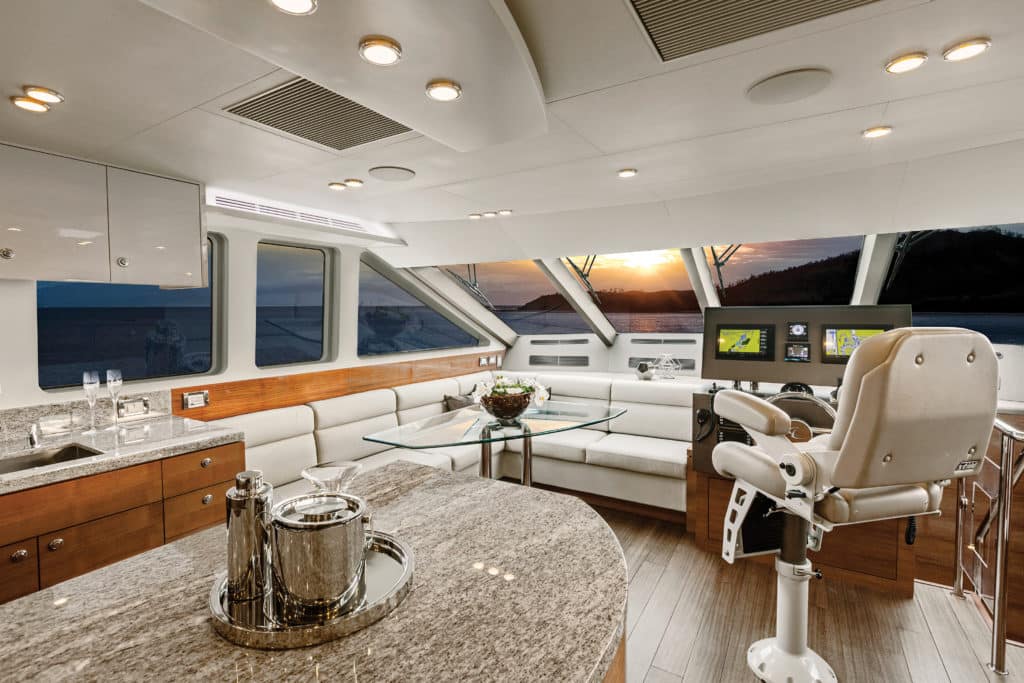
Owners can choose 800 hp Volvo Penta IPS1050s with pod drives or 1,136 bhp Caterpillar diesels with V-drives for power, and the performance of the Volvo Penta IPS1050s on my test vessel suggested they will be a popular choice. My Bravo 72 hit 27.5 knots while her engines burned a total of 78 gallons per hour. With her 1,040-gallon fuel capacity and considering a 10 percent reserve, the Bravo 72 has about a 330-nautical-mile range at this speed. This engine option also provided nimble close-quarters joystick handling, and the pod drives eliminated the need for a multitude of systems (and hull openings), including bow thrusters, stuffing boxes, rudders and mufflers. Howard Apollonio’s slippery hull design, created to increase the water flow around the pods, was also a powerful factor in generating the 27-plus-knot top speed.
One of the most visible benefits of pod drives on any yacht is increased space. The Volvo Penta D3s are compact and low. There is 6-foot-2-inch headroom in the Bravo 72’s engine room, and a diamond-plate sole surrounds each power plant for walkaround serviceability.
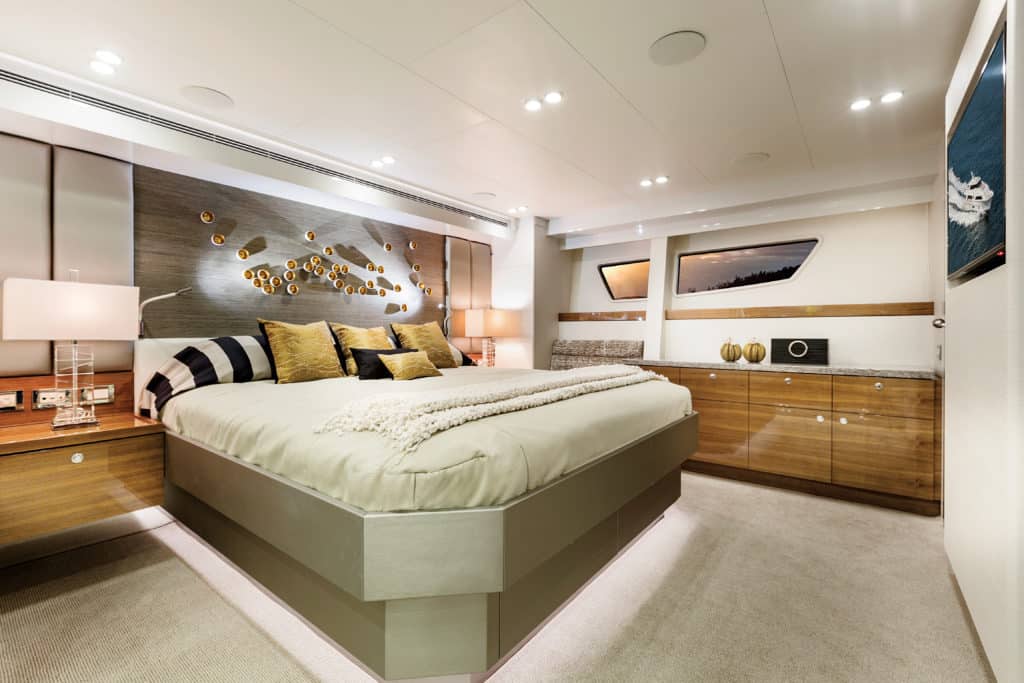
This is an engine room designed by those who have spent hours in hot, cramped compartments and want to spare future yacht owners that stress. The Bravo 72 has racks along the finished hull sides to keep such systems as air conditioning, hydraulics, sanitation and the Reverso oil-changer at user-friendly heights. Twin 23 kW Kohler gensets have mega-yacht-style auto-transfer (see “Power to the People”). Clearly labeled electrical service panels and wiring are almost artistically perfect in looms, and the same description applies to the plumbing, with every hose not only labeled but also marked for direction of flow. Access to the engine room is not just through the transom (which can be dangerous at sea) but also via a pantograph door at the side deck.
To me, the Bravo 72 was obviously designed to be an owner-operated yacht, although there is a crew cabin with berth and head. For amateur or professional skippers, a pantograph door next to the lower helm accesses the side decks, while a foldout joystick station in the cockpit puts the skipper on the scene for docking. Additional stations can be added.
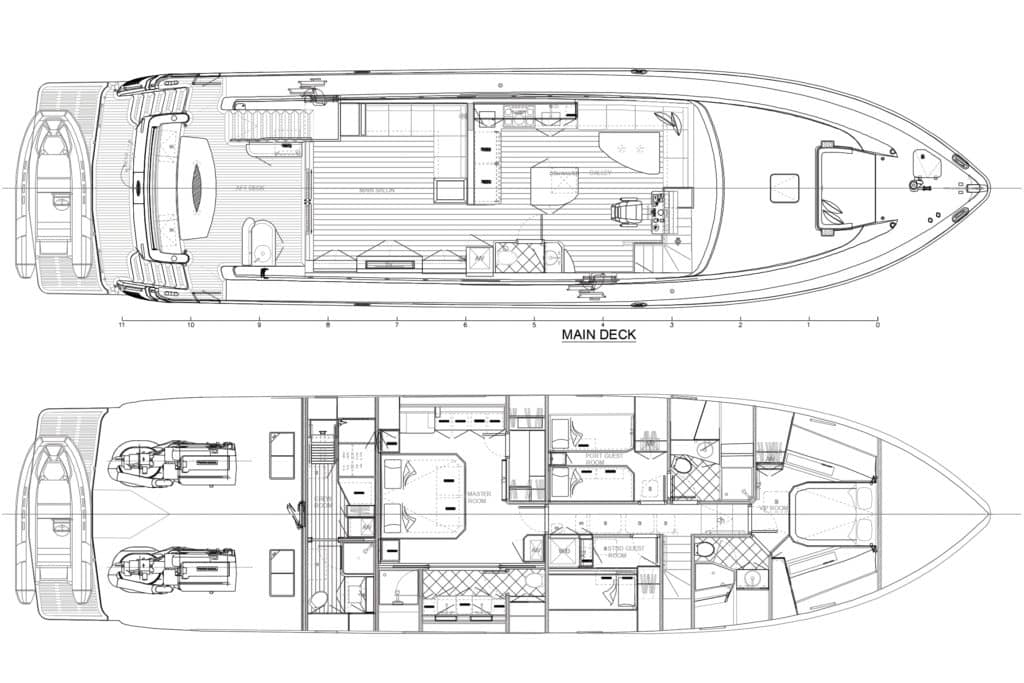
BIG BOAT BENEFITS
Most boatbuilders start with smaller yachts, which can cause problems as they build larger ones. The steering system for an 80-footer, for example, must be far more than twice as sturdy as a 40-footer’s. Cheoy Lee, however, builds everything, from oceangoing ships to tugs, so the Bravo 72 benefits from the demands of captains who need rugged construction and easy-to-maintain systems. Started in 1870, Cheoy Lee is one of the world’s oldest boatbuilders, and its experience is seen in the details, such as neatly organized and labeled wiring and plumbing.
Sylvia Bolton deisgned the Bravo 72’s interior, drawing from a palette of high-gloss walnut, wenge in the planked sole and zebrawood accents. The counterpoint of light and dark wood was pleasing to the eye. An entertainment area is aft, with no bulkheads to obstruct the view forward through the windshield, so the yacht felt open. It took me a moment to realize there was no interior stairway to the bridge, an element that usually chops up the interior sightlines. The main deck has a day-head, tucked away to starboard opposite the amidships galley (based on a client request). Carrying the owner-operator concept forward, the galley is open with a center island and country kitchen-style dinette under the windshield.
The master stateroom is full-beam (19 feet 10 inches) and amidships on the lower deck. The space has a walk-in closet to port with an en suite head to starboard. It has twin sinks and a shower with seat.
Forward, the en suite VIP has an island berth notable for the bins on each side, providing space for guests’ “stuff,” from paperbacks to reading glasses. Abaft to port, a guest stateroom has side-by-side berths with access to the lower day-head. Across the companionway is a third guest stateroom with two bunks.
The flybridge is, in a word, spacious. There is seating fore and aft, a dining table for alfresco meals, a grill and a fridge. The fiberglass hardtop is standard, and it can be enclosed to stretch the boating season. One level down, the flybridge overhang protects the aft deck, creating another entertaining area with settee and bar.
All in all, the Cheoy Lee Bravo 72 is thoughtfully designed and equipped, impeccably engineered and built, and sure to catch the eye of any skipper looking for an owner-operated yacht, especially one with bona fide mega-yacht overtones.
POWER TO THE PEOPLE
Kohler’s Decision-Maker 3500 Controls manages the Bravo 72’s two generators. The controller matches power to load needs, eliminating under-loading and over-fueling. Load-management software monitors vessel power needs, adding or dropping the second generator as required.
WORRY-FREE
Yachts built overseas can be wonderful, right up until something breaks and requires parts or service that seem to be nonexistent in North America. For U.S. owners, Cheoy Lee sources everything, from bow thrusters to doorknobs, to appliances to electronics, in the United States, and then ships them to its yard for installation. Have a problem? All equipment carries a U.S. warranty and local service.

